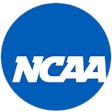|
Copyright 2013 Philadelphia Newspapers, LLC All Rights Reserved The Philadelphia Inquirer |
|
August 23, 2013 Friday
CITY-D Edition |
|
SPORTS; P-com Spt. Other Spt.; Pg. C01
|
|
1270 words
|
| MLL out to prove it's not just another league |
|
By Frank Fitzpatrick; Inquirer Staff Writer
|
|
When Dave Gross examined Major League Lacrosse's business plan in 2000, he figured "MLL" would soon join the scrap heap of dimly remembered initials from failed American sports leagues. "No chance," Gross, a Massachusetts clothing manufacturer who is now that league's commissioner, said at the time. "The world isn't ready for pro lacrosse." While he might yet be proven correct, the MLL has endured far longer than he anticipated - far longer, in fact, than most fledgling leagues. Thirteen years later, in a sports marketplace overflowing with teams, professional lacrosse has carved itself a modest niche. With a vision to become essentially a cable and Internet content provider, and with the game's popularity exploding in America's suburbs, it's now possible to imagine a future - even if it's not quite the utopia the league's famously muscular founder foresees. "Pro lacrosse has the potential to be added to the big four [of American professional sports]," said Jake "Body by Jake" Steinfeld, the successful bodybuilder who had the initial idea back in 1998. "We never dreamed we'd get it off the ground let alone sustain it. But here we are at the end of our 13th season. "It's an awesome sport," he said. "If you love hitting, scoring, and speed, lacrosse has it all." This weekend, at PPL Park in Chester, the four top clubs in the eight-team league - the unbeaten Denver Outlaws, Chesapeake Bayhawks, Hamilton Nationals, and Charlotte Hounds - will wrap up the 2013 season at MLL Championship Weekend, two Saturday semifinals and a title game on Sunday. Philly on the short list The fact that this premier event is taking place here, where there hasn't been a franchise since 2008, indicates both the MLL's problems and ambitions. According to Gross, the league - which plays a 14-game schedule, pays its players between $10,000 and $16,000, averaged just over 5,000 fans a game this year, and produces all its games for TV - hopes to double in size by 2020. Philadelphia, where lacrosse's roots are deep and where the now-defunct Barrage won three titles in a five-year MLL existence, is on the short list. The Philadelphia Wings play indoors at the Wells Fargo Center in the National Lacrosse League from January through April. The MLL season is from April through August, and six Wings are set to play in Saturday's semifinals for three different teams. "We have interest in Philadelphia, and we'll learn a lesson this weekend," Gross said. "We'll see if it's ready again for the MLL. If not, we'll come back every few years and try again. "One of the best ways to determine if a city is ripe for expansion is to play a game there," he said. We played last year's all-star game in Boca Raton. We played three games this season in Boca Raton, Tampa, and Atlanta." In addition to the three American teams and one Canadian team here this weekend, there are MLL franchises in Boston, Rochester, New York (Long Island), and Ohio. Since its 2001 inaugural season, franchises in Philadelphia, Chicago, Los Angeles, San Francisco, and New Jersey have folded. While ambitious sports leagues such as the ill-fated XFL have tried the hare approach and failed, the MLL prefers to be a tortoise. "The XFL started the same year as us," Gross said. "They had a 10 rating for their first telecast. That's a huge number. But after that big initial splash there was nothing. They went through $80 million and were gone after a year. "Instead of spending lavishly, we're out at the grassroots level building it one fan at a time. If we get you through the door, you're going to like the product." Teams such as Boston have boosted attendance by scheduling youth lacrosse tournaments to coincide with games. Concerts, contests, and league-supported camps and clinics are all aimed at growing awareness and understanding of a game that is expanding its borders and burnishing its cachet. "It's got that 'It' factor now," said Steinfeld, who played growing up on Long Island. "Cool guys are playing lacrosse. Let's face it. It's fast-paced, you're wearing a helmet, and you've got a stick in your hand. What kid wouldn't like that? "I go around the country, out west, to Texas or Atlanta, and it's going nuts. There are kids growing up knowing the MLL exists. There was no chance of playing professionally back when I was a kid. We had no dream." On a mission Once centered in the Mid-Atlantic states and parts of Canada, lacrosse is now a sanctioned high school sport in 21 states for boys and in 22 for girls. A 2012 U.S. Lacrosse study found a nearly 10 percent annual growth in participation, primarily among those under 15. Overall, according to the study, there were 685,000 lacrosse participants in the United States. Massachusetts, which, according to Gross, had about 200 players in organized youth leagues when he founded one in Sudbury 20 years ago, now has 40,000. Turning them all into professional fans is the mission. And, without any recognizable stars, that remains a challenge. Sports in 2013 are star-driven, and most MLL players still work two jobs. Its best-known figure, Boston's Paul Ravil, exists in a galaxy far, far removed from the one occupied by such single-named supernovas as Lebron, Kobe, or A-Rod. "Stars have to happen. They can't be created," said Steinfeld, who along with Dave Morrow, an ex-Princeton player who founded a successful lacrosse merchandise company, put together the MLL's financial underpinnings. The league's growth has been slow, and, even Gross admits, attendance, which has hovered between 5,000 and 6,000 in recent seasons, has to improve. Initially, the MLL irritated purists by instituting a two-point arc and a shot clock. Much like baseball's designated hitter or basketball's three-point line were received, the changes were viewed as gimmicks. "Some of these people didn't like the concept of professional lacrosse at all," said Gross, 47, who runs the league from a Boston office. "They liked it as a little club game, and in the early days they acted like blockers. It took time to get past that. Now the college game has adopted the clock." 'Making history' Whether the MLL survives, of course, depends largely on how successfully it penetrates the crowded TV sports market. In 2008, the league began producing every game and a weekly magazine show. Many land on ubiquitous regional sports networks. This season, six MLL games were aired on ESPN2, 20 on CBS Sports Network, and 19 on regional networks such as MSG and various Comcast and Fox affiliates. "We receive a small rights fee from only one of our TV partners," said Gross. "We decided back in 2008 that instead of spending, say, $2 million for national advertising, we'd produce our games and broadcast them somewhere, somehow. Now we're showing product, creating content, and making history." The league's 2013 draft, which was basically two talking heads and the commissioner at a podium, attracted 44,000 YouTube viewers. So the MLL decided to show 15 games via that popular online site. "This isn't a fad," Steinfeld said. "Instead of being a sport parents sign you up for, kids are asking to play lacrosse. It's become a lifestyle for them. And we want to tap into that." MLL Schedule What: 2013 Major League Lacrosse Championship Weekend. Where: PPL Park, Chester. When: Saturday and Sunday. Semifinals: Saturday, 1 p.m. - Denver Outlaws vs. Charlotte Hounds; 4 p.m. - Chesapeake Bayhawks vs. Hamilton Nationals Final: Sunday, 3 p.m. Contact Frank Fitzpatrick at 215-854-506 or ffitzpatrick@phillynewscom. Follow @philafitz on Twitter. Read his blog, "Giving 'Em Fitz," at www.philly.com/fitz |
|
August 23, 2013
|
Terms and Conditions Privacy Policy



































